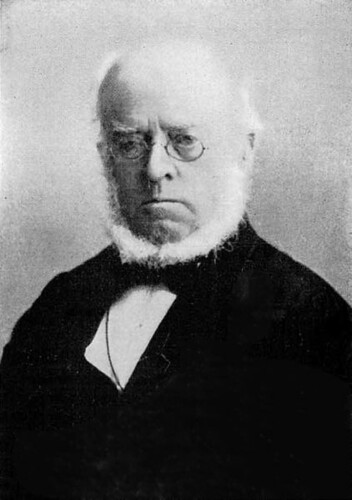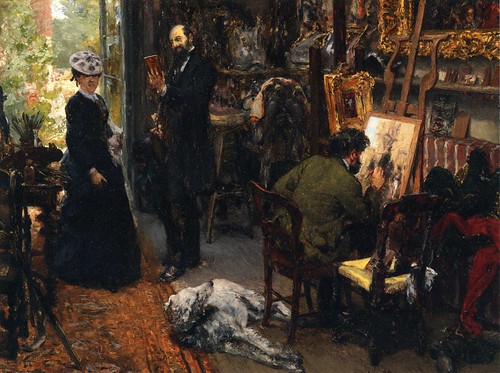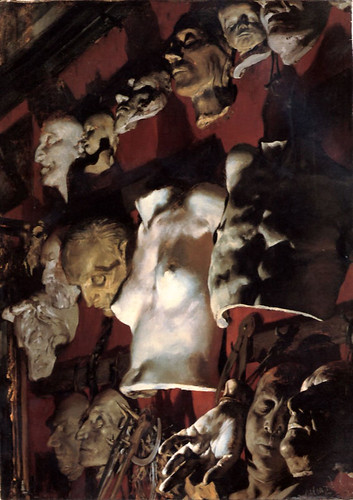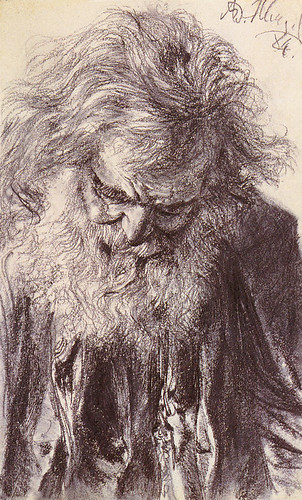Forgotten Master: Adolf von Menzel (Polish/German, 1815-1905)
"Not a day without drawing," was a motto often repeated by Menzel and recalled by his students at the Royal Academy of Art in Berlin.

Portrait of Adolf von Menzel (a. 1880) Image published in Newcomb, A; Blackford, K.M.H.: Analyzing Character, 1922. Photographer Paul Thompson.
Adolf von Menzel (Polish/German, 1815-1905) The Artist's Sister, Emille, Sleeping (c. 1848). Oil on paper. 46 BY 60CM. Kunsthalle, Hamburg.
Adolf von Menzel (Polish/German, 1815-1905) View from a window in the Marienstrasse (1867) Gouache over chalk. Oskar Reinhart Foundation, Winterthur.
Shortly after moving to Berlin, Menzel's father died unexpectedly leaving a young Menzel as the sole provider for the family. Eventually, Menzel was able to involve other members of the family in the business and pursue an education and career in art.
Adolf von Menzel (Polish/German, 1815-1905) A Study of Castes. Oil on canvas. Private collection.
He accepted at the prestigious Royal Academy of Art, where he was discovered by a wallpaper magnate, Carl Heinrich Arnold, who would be become Menzel's patron, promoter, and friend.
His graduation from the Academy was followed by a series of lithographic commissions, including works by Goethe and a history of the Frederick the Great.
 Adolf von Menzel (Polish/German, 1815-1905) Meissonier in his studio at Poissy (1869) Oil on panel. 8 1/4 BY 11 3/8IN. Private collection.
Adolf von Menzel (Polish/German, 1815-1905) Meissonier in his studio at Poissy (1869) Oil on panel. 8 1/4 BY 11 3/8IN. Private collection.
In 1855, Menzel traveled to Paris for the first time. The occasion was most likely the influential Paris Exposition Universelle, with thousands of artists' works on display in series of pavilions organized by nationality. There Menzel saw Gustave Courbet's "Pavillon du Réalism," which led to a more naturalistic approach to his paintings. From that time forward, he would make regular trips to Paris and came to know some of the city's most important artists.
Adolf von Menzel (Polish/German, 1815-1905) Aufbewahrungssaal während des Museumsumbaus (1848) Pastel on paper. 46 BY 57CM. Alte Nationalgalerie, Berlin.
By the end of his life, Menzel was considered one of Berlin's greatest artists. He joined the Royal Academy of Art in 1853, and was a teacher at the school from 1875 until his death in 1905. He had been decorated as a Knight of the Black Order, given the rank of Privy Councilor with the title "Your Excellency," and awarded an honorary doctorate at the University of Berlin.
This gave him a crowd of admirers and friends within government and other circles; in fact, one of his closest friends was the composer Johannes Brahms.
Adolf von Menzel (Polish/German, 1815-1905) Portrait of an Old Man (1884) Pencil on paper. 8 1/2 BY 5IN. Private collection.
Internationally, he had been honored with a show dedicated to his work in Paris in 1884, and was granted membership at the Royal Academies of London, St. Petersburg, and Paris. His works regularly appeared in the Paris Salon until his death.




